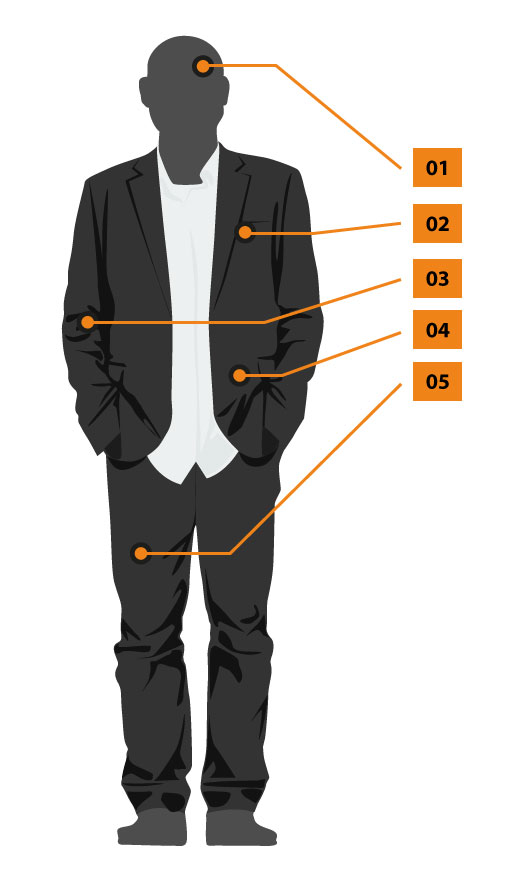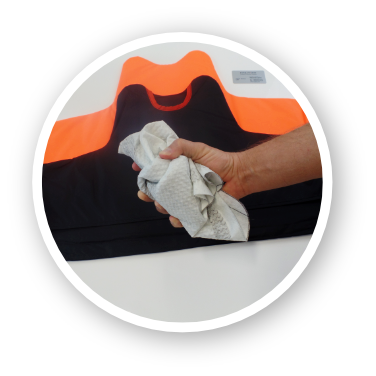
Atlas of Gunshot Wounds
Like a stone thrown into the ocean, a bullet explosively penetrates the body and even creates waves – after all, over 70 percent of the human body consist of water. These waves can cause severe injuries: Organs and blood vessels can be torn and bones can even break, although they were not directly hit by the projectile.
Radial tears up to 15 centimetres long, depending on the calibre, occur along the path of the bullet. Cardiac muscles can be practically shredded, even if the hit is nowhere near the heart. Bones can also be struck. The resulting bone splinters become secondary projectiles causing more injuries themselves.

01.
HIT RATE: 21 %
FATALITY RATE: 47 %
There is a 50% chance of survival when somebody’s head is hit, if no essential brain areas or blood vessels are injured.
It is not rare for damage to be limited to severe facial injuries that do not affect the brain.
02.
HIT RATE: 13 %
FATALITY RATE: 25 %
Life-threatening injuries in this area primarily concern the heart, lungs and large blood vessels. Nevertheless, the victim can be saved in three out of four cases in event of prompt medical care.
03.
HIT RATE: 23 %
FATALITY RATE: 5 %
An apparently harmless hit in the arm can still be fatal. Just like a suicide by slitting the wrists, the blood loss can be dramatically rapid. The arms are often wounded during military actions, especially when soldiers fire from cover, leaving the arm unprotected.
04.
HIT RATE: 10 %
FATALITY RATE: 15 %
If the torso, larger blood vessels or organs with high content, such as the liver or kidneys, are hit, immediate surgical attention is required, due to the severe blood loss, in order to make quite a high probability of survival possible.
05.
HIT RATE: 33 %
FATALITY RATE: 7 %
The large blood vessels are highly sensitive. If these are injured by bullets or bone splinters, the victim can bleed to death in just a few minutes. Legs are shot relatively often by the police to prevent perpetrators from fleeing.


